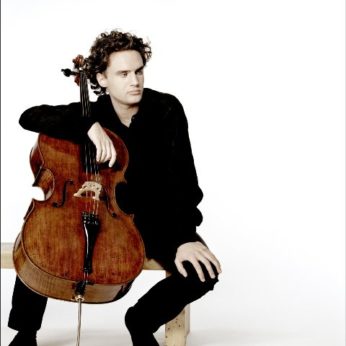Composer: Ludwig van Beethoven (b. 1770 - d. 1827)
Performance date: 30/06/2013
Venue: Bantry Library
Composition Year: 1815
Duration: 00:15:16
Recording Engineer: Damian Chennells, RTÉ lyric fm
Instrumentation: vc, pf
Instrumentation Category:Duo
Artists:
Leonard Elschenbroich -
[cello]
Alexei Grynyuk -
[piano]

One of Beethoven’s most loyal and valued
friends was the Countess Marie Erdödy. She seems to have been a talented
pianist herself and she employed resident music teachers for her three children
including the cellist Joseph Linke and the violinist Joseph Brauchle. Beethoven
took lodgings in her house in 1815, where he wrote the two Opus 70 piano trios
and he became something of a family friend. She was separated from her husband
but there does not seem to have been any hint of a romantic relationship
between them. Some of Beethoven’s letters to her have survived and he was
clearly deeply upset when she moved away from Vienna. The playfully ironic nature of their
friendship can be seen in a poetic request she sent him to remain in their
house.
Apollo’s
chief son, Greatest of great spirits,
The
first master in composition, now known to Europe,
To
whom even Apollo yields,
And,
from the throne of the Muses, rewards with his crown.
Hear
our request,
Remain
today in our midst – thou great man Beethoven,
Give
fiat to our hopes.
[signed]
The old Marie
The young Marie
The unique Fritzi
August ditto
Magister ipse
The cursed cello
The old Baron of the Empire
The Chief Bailiff
Clearly Beethoven was very much part of
their family circle, knowing the three children by their nicknames. The two
cello sonatas from Opus 102 were written for the cursed cello, Joseph Linke, and the old Marie, the Countess herself, to play. Linke became part of
Beethoven’s musical circle as a member of Schuppanzigh’s famous quartet and he
was also part of the team that premiered Schubert’s great E flat Trio in
January 1828, so he must have been a fine chamber musician.
Although technically in four movements, the
sonata more accurately consists of two movements each with an extended slow
introduction. A feature of Beethoven’s later years was his willingness to
experiment in all sorts of ways with the number and form of movements. This
sonata seems to work on many different levels being written on the one hand for
enjoyment in the family circle and, on the other hand, as a testing piece for a
very fine cellist.
The opening Andante is a gentle reflection
on an easy-going melody that gives both players an opportunity to be quietly
expressive. This leads directly into a vigorous Allegro that is perfectly
written for the two instruments with a flawless balance between the partners.
The second half of the work begins with a recitative-like Adagio that builds
the tension up before it can be released in the high jinks of the final
movement. This helter-skelter Allegro very vivace is enormous fun, with its
catch-me-if-you-can game built around sudden melodramatic pauses. There is
definitely a feeling here that Beethoven is writing for the entertainment of
his friend’s family and for the huge enjoyment of the musicians.
Copyright © 2024 West Cork Music. All rights reserved.
Designed and developed by Matrix Internet